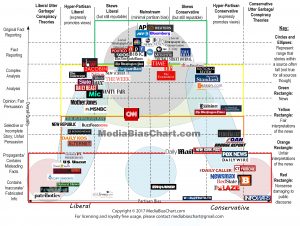Throughout the campaigning leading up to the United States 2018 presidential election, misinformation and fake news took over news outlets and spawned a lot of issues. Anyone can write whatever nonsense they think will garner them a giggle or a like or get them blocked on Twitter, but why is there so much fake news and where does it come from? Well, a great deal of it came from a small town in Macedonia.
In Veles, dozens of teenagers from this small town construct their own news sites and publish false news stories focusing on the United States election. Several boys have come forward to talk about their experience with journalists under pseudonyms, The Wired focused a boy who called himself Boris. He was inspired by his friend’s successful health website that provided fake home remedies and so he founded several websites to fill with false and plagiarized articles on American politics. CNN interviewed a boy who went by Mikhail whose work was trafficked over social media. Mikhail claimed to make around $2,500 a day from the automated advertising engines on his websites whereas Boris garnered over $16,000 in his first four months.
Mikhail and Boris are just two of the many young “journalists” in Veles as the town was “the registered home of at least 100 pro-Trump websites, many of them filled with sensationalist, utterly fake news” (Subramanian, 2017). Mirko Ceselkoski has over ten years of experience in running websites directed toward American audiences, beginning from celebrities and muscle cars until he discovered the virality of fake news. He now works to coach students how to earn money through fake news sites, boasting that at least four of his students are millions, though the claims cannot be verified (Davey-Attlee, n.d.). These writers carefully chose topics that would attract the most views and many decided to focus on Pro-Trump stories, not because they cared about Trump’s policies, but because his name was sensationalized. Boris found that Bernie supporters were harder to fool without some sort of proof, so Boris decided to completely focus on a Pro-Trump audience as they had more Facebook groups and appeared to trust his stories more easily (Subramanian, 2017). These groups were more receptive to such subjects as Hillary Clinton’s imminent criminal indictment and as the pope’s approval of Trump.
Macedonia’s unemployment rate is about 24% and the average monthly salary is $371. Veles is a small town in the center of the country that slowly declined since Macedonia’s independence in 1991, the town also once boasted the title of the second most polluted town in Yugoslavia. Boris comments that “We can’t make money here with a real job,” such as skilled trade careers or factory jobs, “This Google AdSense work is not a real job.” His first four months of his online work garnered over eleven times the amount of money that the average Macedonian citizen made, and many writers where earning more in one month than the average citizen would make in their lifetime. Boris chose to take on a dishonest job and while he doesn’t believe he had any part in the outcome of the election, as he was just repeating others’ thoughts on a random website, he can’t help but care about the results, stating that “some crazy man has won the election. Maybe the guy will start World War III” (Subramanian, 2017).
The Wired states “the election summoned forth the energies of countless alt-right websites in the US, which manufactured white-label falsehoods disguised as news on an industrial scale. Across the spectrum of right-wing media—from Trump’s own concise lies on Twitter to the organized prevarication of Breitbart News and NationalReport.net—ideology beat back the truth” (Subramanian, 2017). Our society is easily persuaded by the internet as we aren’t educated enough to know how to identify valid sources and biases. We ourselves, as viewers, tend to be biased in how search for information, as we want sources to back up our ideas rather than tell us that we are wrong. That is the audience that Boris would aim for, supporting one’s thoughts with lies that feed and enforce their point of view. Boris’s stories are an example of why and how fake news is spread, but also the impact of this false information and how his content possibly even influenced some percentage of the election votes.
Davey-Attlee, F., & Soares, I. (n.d.). The fake news machine: Inside a town gearing up for 2020. Retrieved from http://money.cnn.com/interactive/media/the-macedonia-story/
Subramanian, S. (2017, May 01). The Macedonian Teens Who Mastered Fake News. Retrieved from https://www.wired.com/2017/02/veles-macedonia-fake-news/
